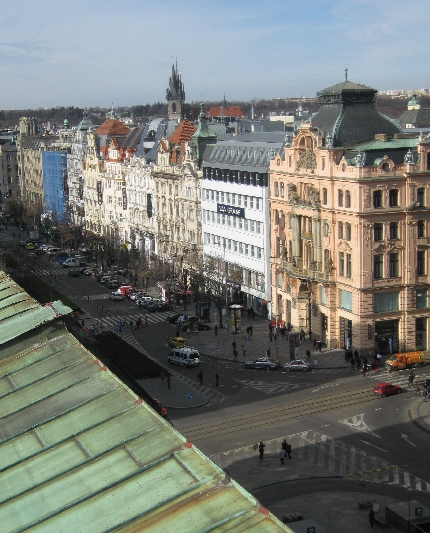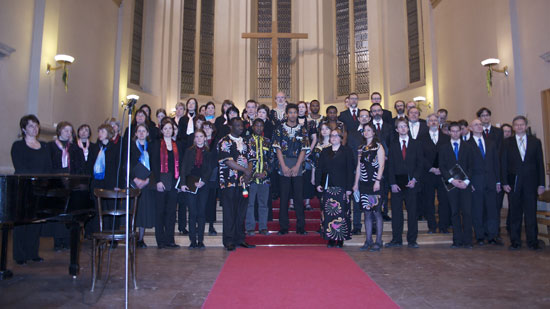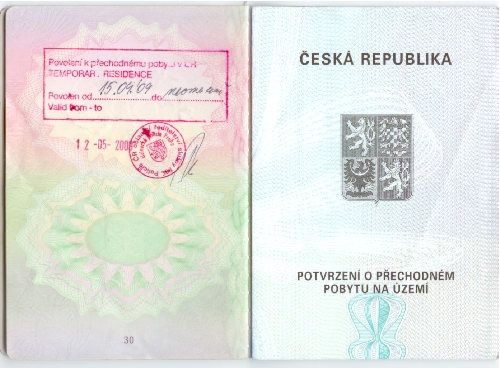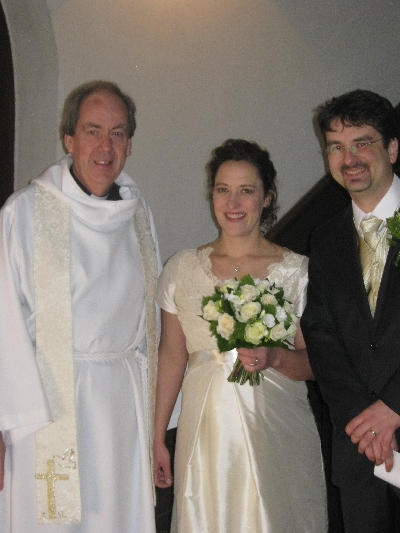
On Saturday 3rd March, I conducted my first wedding of 2012 when Petr, a Czech, married Kristin, an American. The wedding took place at St. Clement’s Church with a congregation made up of Petr’s Czech relatives, a small number of Kristin’s American relatives, together with numerous mutual friends.
This wedding presented all the usual problems that arise when I conduct a Czech to English-speaker marriage. Petr’s parents and older relatives do not understand or speak English. None of Kristin’s family speaks Czech except for Kristin herself who has lived in Prague for twenty years and has her own business here. How was I to conduct a service that would be understood and appreciated by everyone present?
As with previous Czech to English-speaker weddings, I got Petr and Kristin to produce a completely bilingual order of service to allow everyone present to follow the liturgy and Bible Readings, even when they were not being spoken in their own native language. But I also got my good friend Kvetoslav, Lay Vice President of the Czech Old Catholic Church, to help me with saying parts of the liturgy in Czech, as well as translating my words of welcome and explanation at the beginning of the service.
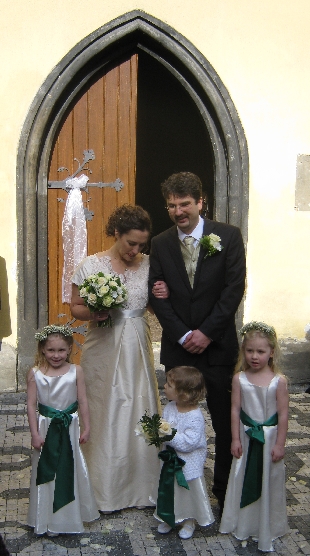
Therefore, Kvetoslav helped Petr make his vows to Kristin in Czech whilst I helped Kristin make her vows to Petr in English. And the couple chose two Bible Readings, one read in English by Kristin’s mother, and the other read in Czech by Petr’s niece.
We even managed to sing one hymn, admittedly only in English. We sang ‘Joyful, joyful, we adore thee’ which is an American hymn that appears in the ‘The Hymnal’ of the American Episcopal Church. Both Kristin and her parents are from the Episcopalian tradition in the USA. Fortunately, the hymn is set to Beethoven’s ‘Ode to Joy’, the official anthem of the European Union, so it did seem quite appropriate for a transatlantic marriage!
The wedding reception took place in the cupola on the top of a wonderful cubist style building located half-way up Václavské námestí/Wenceslas Square, which currently belongs to the Landesbank Baden-Württemberg. From the cupola, there are amazing views right across Prague as well as looking down on Václavské námestí/Wenceslas Square.
Together with some excellent food and wine, the guests were also entertained by a splendid jazz trio. And throughout the afternoon, both Sybille and I constantly received compliments as to how much everybody had enjoyed the service in Church, especially the way it had enabled both Czech and English speakers to participate and fully understand all that was being said and done.
Particularly from young Czechs, I got expressions of both appreciation, but also of surprise, in that they found the way I led the service both warm and welcoming and in total contrast to their past experience of attending occasional Czech Church services. Whilst it is always nice to be appreciated, it does sadden me that the experience of so many Czechs, is that the Christian Church is both cold and unwelcoming.
It is not the primary purpose of my being here in the Czech Republic, to minister to the spiritual needs of Czech people, but rather to the spiritual needs of native English-speakers. But I increasingly feel that the main reason that the Czech Republic is as atheistic or agnostic as it appears to be, is not because of a deliberate rejection of Christian faith by its population, but rather as a result of the failure of the Czech Christian Churches to be an attractive advert for the Christian faith.
|
|


